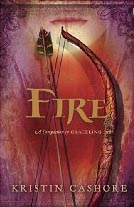 Fire
Fire
by Kristin Cashore
Dial Books, 2009. 461 pages.
Starred Review.
Sonderbooks Stand-out 2010: #2 Fantasy Teen Fiction
Fire is a “companion novel” to the powerful book Graceling. I don’t think it matters which book you read first, but if you read one, you will definitely want to read the other. The books are set in the same world, but the kingdoms of one book are set apart by impassable mountains from the kingdoms of the other. The one thing they have in common is a villain, and he is sinister enough whether you know what his power is or not.
The Kingdom of the Dells does not have Gracelings. Instead, they have monsters — both animal and human.
In the Dells lived colorful, astonishing creatures that the Dellian people called monsters. It was their unusual coloration that identified them as monsters, because in every other physical particular they were like normal Dellian animals. They had the shape of Dellian horses, Dellian turtles, mountain lions, raptors, dragonflies, bears; but they were ranges of fuchsia, turquoise, bronze, iridescent green. A dappled gray horse in the Dells was a horse. A sunset orange horse was a monster.
Larch didn’t understand these monsters. The mouse monsters, the fly and squirrel and fish and sparrow monsters, were harmless; but the bigger monsters, the man-eating monsters, were terribly dangerous, more so than their animal counterparts. They craved human flesh, and for the flesh of other monsters they were positively frantic….
He heard there were one or two monsters of a human shape in the Dells, with brightly colored hair, but he never saw them. It was for the best, because Larch could never remember if the human monsters were friendly or not, and against monsters in general he had no defense. They were too beautiful. Their beauty was so extreme that whenever Larch came face-to-face with one of them, his mind emptied and his body froze, and Immiker and his friends had to defend him.
“It’s what they do, Father,” Immiker explained to him, over and over. “It’s part of their monster power. They stun you with their beauty, and then they overwhelm your mind and make you stupid. You must learn to guard your mind against them, as I have.”
Larch had no doubt Immiker was right, but still he didn’t understand. “What a horrifying notion,” he said. “A creature with the power to take over one’s mind.”
Fire is such a monster. But she’s determined not to use her mind powers on people against their will. She’s determined not to be as monstrous as her father was.
However, she can’t help her overwhelming beauty. She can cover her hair; she can try to hide from the raptor monsters that thirst for her blood; but she can’t change who she is. People are powerfully attracted to her, but they also hate her for it.
Then a stranger comes to their land and shoots Fire by accident, and he in turn is executed by an archer with prodigious skill. The kingdom is at war, so Fire and her boyfriend Lord Archer head toward the queen mother’s stronghold to find out if the strangers are coming from the rebellious lords.
One thing leads to another, and the royal family asks Fire to come to the King’s City to interrogate another stranger. Fire doesn’t want to use her powers against people, but what if the kingdom is at stake? Meanwhile, the king can’t resist her beauty and asks her every night to marry him. His brother is far more restrained, so why is Fire dismayed to see how kind he is?
Fire is a powerful tale of adventure and romance about a young woman who is too beautiful for her own good.
I thoroughly enjoyed this book. Kristin Cashore has built a world that completely draws you in, just as she did with Graceling. She quickly establishes the “rules” of life in this other world, and gets you mulling along with Fire as to what that means about who she is and what she can be and do.
I was a little dismayed by all the casual sex in a young adult novel. It’s no different than our society today, I suppose, but I found it kind of sad that it’s just taken for granted. There are plenty of illegitimate births, but not too many other repercussions; it’s just treated as the natural way of things, and I found that a little sad. Fire’s boyfriend at the beginning sleeps with plenty of other women, and I suppose that makes you less sorry for him when Fire finds true love elsewhere. Call me a romantic, but I would have been happier for Fire if she had waited a bit for that true love. And the other women are surprisingly calm to find out about each other, too, I might add.
The book isn’t graphic about the sex, but the fact that it’s going on is no secret. As I say, it’s no different from our own culture any more, but ten years ago, I think you would have only seen this sort of thing in a book for adults, not one for teens.
Anyway, the book gives you a wonderful tale of adventure and magic and romance. But I don’t think of it as a children’s book.
Buy from Amazon.com
Find this review on Sonderbooks at: www.sonderbooks.com/Teens/fire.html
Disclosure: I am an Amazon Affiliate, and will earn a small percentage if you order a book on Amazon after clicking through from my site.

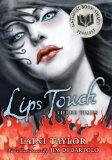 Lips Touch
Lips Touch Where the Mountain Meets the Moon
Where the Mountain Meets the Moon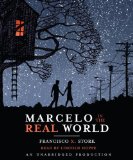 Marcelo in the Real World
Marcelo in the Real World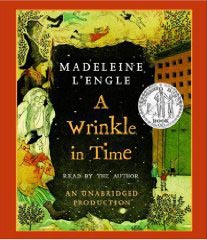 A Wrinkle in Time
A Wrinkle in Time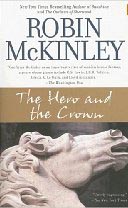 The Hero and the Crown
The Hero and the Crown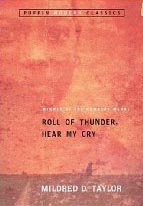 Roll of Thunder, Hear My Cry
Roll of Thunder, Hear My Cry  Fire
Fire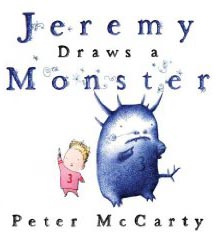 Jeremy Draws a Monster
Jeremy Draws a Monster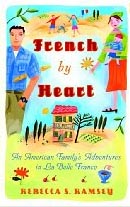 French by Heart
French by Heart